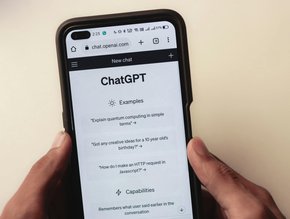How AI and advanced analytics could change healthcare

Though doctor-patient relationship has been a tenet of medical practice for millennia, many commentators now wonder whether AI will disrupt healthcare, the way the web has disrupted businesses like retail and travel. Is a new age of medicine, where ‘the AI will see you now’, at hand?
On balance, I think that’s unlikely. Aside from the limitations of the technology available to us today, the simple fact is that disease is part of the human experience. And we know people who are sick are likely to respond positively to other people. Having said that, I do believe that AI and other technologies can play a bigger role in care delivery, alongside patients and their doctors. Epilepsy – a lifelong condition where sufferers experience unpredictable and sometimes uncontrollable seizures affecting over 60 million people worldwide – is a very good example of how the digital health revolution could unfold.
Despite having been first documented in 400BC, epilepsy is still a challenging condition to understand, let alone treat. Doctors must rely on patient-reported data and anecdotal evidence and often will need EEGs, MRIs and scans for proper diagnosis, and it can take up to 4-5 years to find the right treatment.
The way in which a patient experiences epilepsy is severely affected by a vast range of factors. This includes their sleep, diet, mood, and any comorbidities. Up to 80% of patients suffer from at least one comorbidity, which limits their treatment options. Yet only 50% of diagnosed patients will have seen a neurologist in the past year. Only two thirds of the global population living with epilepsy have access to a treatment plan that works for them. The remainder must live with uncontrollable seizures.
For those burdened by the disease, and especially for the final portion of patients who can’t currently be treated, life is characterised by lack of control and unpredictability. They can’t control when they will have a seizure, how people around them might respond when it happens, or what the impact on their health might be. In studies we have sponsored, many epileptics tell us they find themselves marginalised from mainstream life, as many find it hard to keep jobs, and spend large amounts of time in healthcare systems that aren’t oriented towards their needs.
Epilepsy is a complex condition, therefore, and one where there are many unmet patient needs. We think meeting those needs will involve both medicines and data science, working together. Here are a few examples of how this could work in practice:
1. Learning the lessons of the past: there is a wealth of experience buried in medical records and other data sources but gleaning meaningful insights from it has been challenging. Big data science now makes this kind of data mining a real possibility. We’re working with for instance Georgia Tech in the U.S. to harness the power of big data and computational science and couple it with our established clinical expertise in epilepsy in an effort to find ways to identify the right solution for patients faster.
2. ‘Streaming’ patient data: we don’t need to use expensive machinery and hospital beds to track epilepsy symptoms. We can track all the signs we need – heart rate, brain activity, movement, and other modalities – using sensors. As an example, we’re part of a consortium called SeizeIT, which aims to produce a wearable device which will fit around the ear just like a hearing aid. By helping patients and doctors see when seizures occur there are likely to be fewer surprises, and eventually less time spent in hospital.
3. Sensors on pills: ingestible event markers (IEMs) are capsules containing printed circuits made from digestible materials. They make it possible to follow medication through patients’ digestive systems, right up to the point where the capsule is broken down and the drug enters the bloodstream. Since factors like diet and eating habits can have a significant impact on medicines’ effectiveness, knowing exactly when they will take effect is extremely important. “Take three times a day with food” is easy enough to follow, but not accurate enough for today’s sophisticated medicines – or for those whose epilepsy defies conventional treatment.
4. Hacking epilepsy: Hackathons have been around for some time and they remain remarkably successful at surfacing new ideas which can be quickly translated into patient benefits. An example of one of the projects that came out of our hackathon is Helpilepsy, a digital open platform linked to IoT devices and social features to track epilepsy, to empower the patient and to generate actionable insights for both patient and physician.
Towards a new ecosystem for digital health
Though we understand epilepsy and patients’ unmet needs better than anyone else, we recognise we don’t have all the answers when it comes to the technology solutions, What the initiatives outlined here all have in common is their focus on unmet patient needs. And this, for us, is the acid test: if digital innovations can help improve patients’ lives – and in the case of epilepsy, meet the needs of the final section of patients who don’t yet have treatments that work – then they are worth embracing. So long as technologies like AI meet unmet patient needs, they must be given due consideration.






